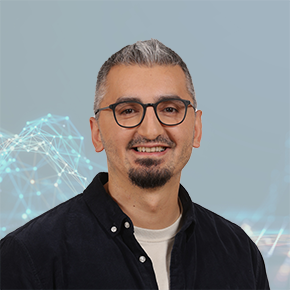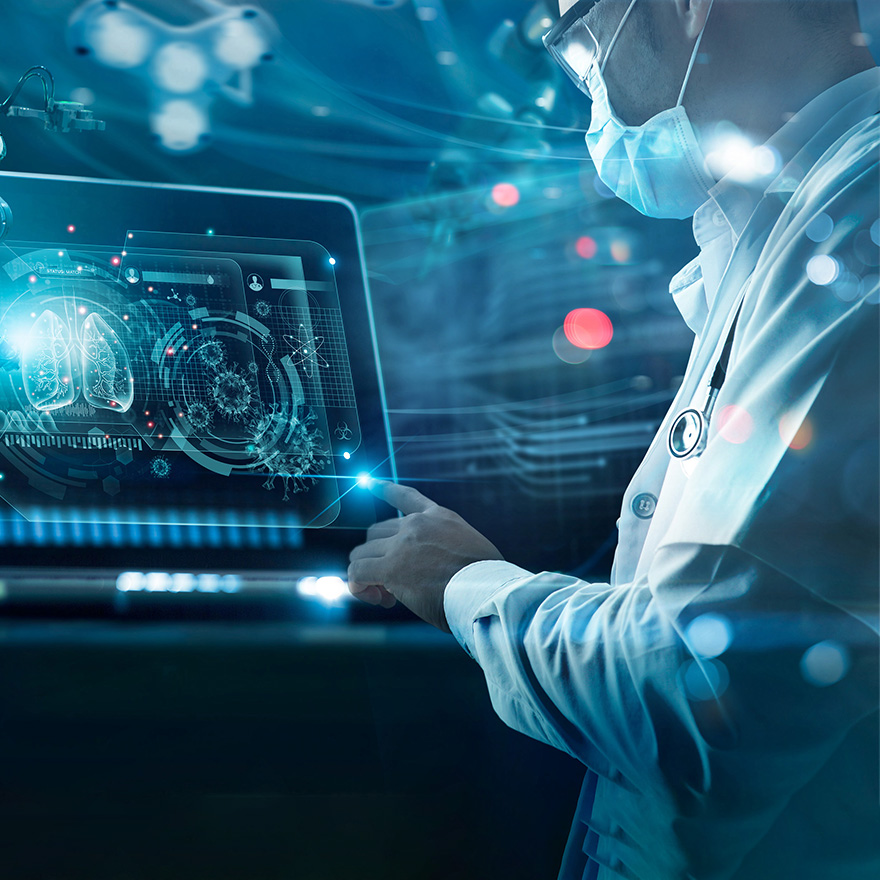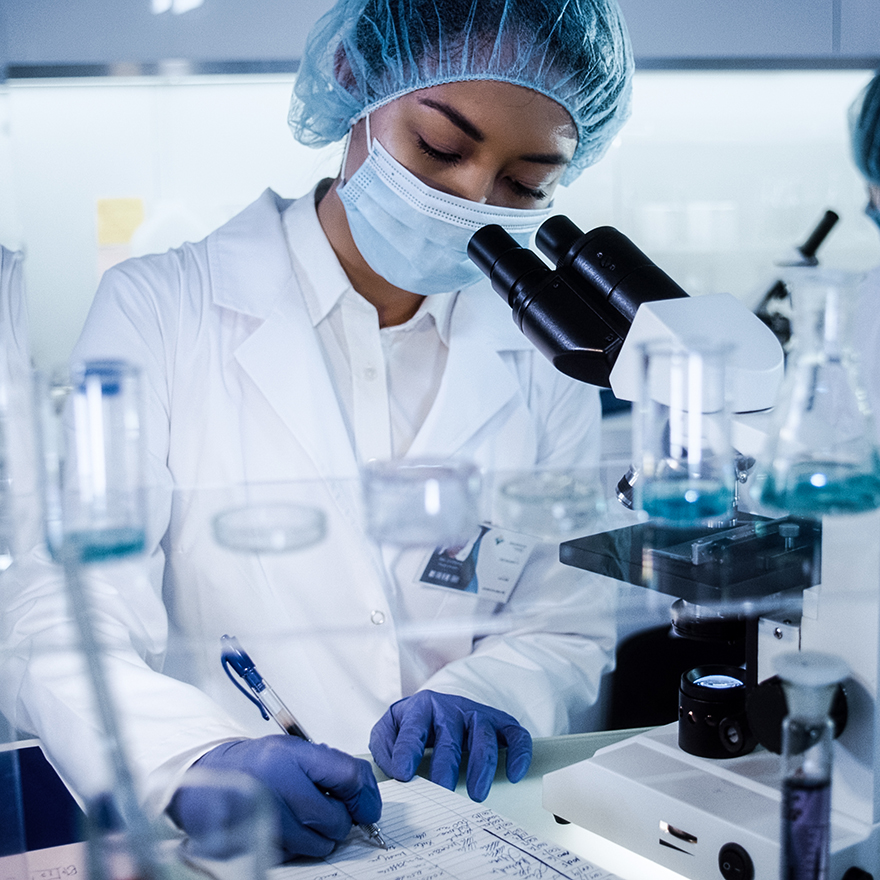The broad and highly dynamic field of medical devices is shaped by leaps in technology and innovation. Alongside this are processes for accessing the market and in risk assessment which are largely based on manually created tables and texts – the contrast could hardly be any greater. In order to close the gap between the dynamic world of technology and the current reality of assessment, the BfArM brings targeted expertise of risk processing and assessment of medical devices to forward-looking initiatives. With in-house research into data-protected detection and assessment of risk signals, the Federal Institute is taking a pioneering role among the European authorities.
We are already beginning to see where digitalisation will be revolutionising patient care: products are becoming increasingly targeted towards individual groups, digital assistants and the like are part of everyday life, while communication about products is growing. “Medical devices are becoming increasingly smart and connected,” says Dr. Samet Bayraktar from the Department of Medical Devices. “The more sophisticated they become, the more complex they are too. This is true for the entire life cycle, from development, certification and market access, to risk reporting assessment and monitoring. This increases the challenges for all players involved.”
Manufacturer information and documentation generally includes several pages of text, hundreds of lines of tables and countless references. To check this in detail is timeconsuming and labour-intensive.
Medical devices are becoming increasingly smart and connected.
Dr. Samet Bayraktar, Data Scientist in the medical devices department, specialising in research, data management and analytics

Together with his colleague Dr. Davood Moghadas, Bayraktar works as a Data Scientist for the BfArM. Their mission: to set up data in a structured way, enabling interfaces between the processes, and creating the groundwork for supporting IT tools. For this, the BfArM is, among other things, involved in two research initiatives: AI-assisted certification of medical software (KIMEDS) and Secure Medical Microsystems and Communications (SEMECO). Both projects benefit from regulatory expertise and a wide range of data through which the BfArM has access to event reports for medical devices. The data scientists at the BfArM are agreed that making this treasure trove of accessible knowledge would be to the benefit of developers, certification authorities and, above all, also the patients.
Accelerating processes, increasing safety
More than 35,000 risk reports on medical devices are received by the BfArM every year – and the trend is on the rise. In each case, the assessors need to be in a position to gain a comprehensive overview of the problem and its causes as quickly as possible, so that they can make informed decisions on any measures required with regard to patient safety. The more comprehensive the safety documentation becomes, the greater the risk that relevant safety problems could be missed. “In the KIMEDS project, to put it simply, we are therefore looking into the approach of allowing manufacturer documentation on safety aspects to be checked using the help of artificial intelligence (AI),” explains Davood Moghadas. “This can speed up the assessment and, at the same time, increase the level of analysis.”
More than 35,000 risk reports on medical devices are received by the BfArM every year – and the trend is on the rise.
Dr. Davood Moghadas, Data Scientist in the medical devices department, specialising in research, data management and analytics

The BfArM is relying on data and text mining. This involves statistical methods being applied to the ample data stocks. Davood Moghadas: “The aim is to transfer our individual cases into a network of information with logical connections. This allows us to detect patterns and trends that will help us in our regulatory work. This kind of accessible pool of knowledge will enable us to analyse newly reported events much faster and better. At the same time, weak points and potential sources of errors can be identified in advance in a more targeted way – for example, during clinical examinations.”
The vision of KIMEDS: a process supported by artificial intelligence over the entire life cycle of a medical device. Access to market will be facilitated for developers, while certification bodies, supervisory authorities and the BfArM will be able to carry out analysis and evaluation faster, in greater detail and in a more targeted way. Patients will get double the benefit. “On the one hand, new, innovative products reach the market more quickly and, on the other hand, the data-supported processes improve safety,” Moghadas explains.
KIMEDS initially focussed on medical software for X-ray machines and endoscopes. In the long term, AI-supported evidence has the potential to have a positive influence on the entire medical device sector.
Certification meets cybersecurity
How valuable structured knowledge can be, becomes apparent at the latest when the technical medical evaluation is performed in conjunction with cybersecurity. This where the SEMECO project comes into play, expanding the knowledge modelling or the basic methods of KIMEDS with the cybersecurity topic. “We are all familiar with media reports about hacker attacks, which can bring whole hospitals to their knees,” says Bayraktar. Of course more communication and connectivity also for medical devices and their components means more potential targets for attackers. On the one hand, functional flexibility is needed, but it is becoming increasingly difficult and time-consuming to provide formal evidence for the security. “Manufacturers need to get deeply involved in the development and also cover areas outside of their own core competences,” says Bayraktar, highlighting the problem. The SEMECO project is therefore dedicated to medical microsystems and searches for solutions to bring system development and security documentation in line with each other.
Structuring diversity
The aim is to create a new ecosystem using a modular design of system, modular platform and modular regulations. Samet Bayraktar: “In the project, we want to work together with other project partners from research, regulation and industry to create a kind of construction kit, which guarantees standards for regulatory documentation using scalable knowledge systems and explicable artificial intelligence.” Currently, electronic circuit designs and chip designs exhibit minimal standardisation and high variability. Since all medical microsystems are software-controlled, it stands to reason that safety documentation should already be integrated at a system software level.
Structured knowledge also has a key role to play here. As a regulatory player, the BfArM identified cases in its incident database which are related to cybersecurity. “From the infusion pump to the pacemaker, we have many application cases which could be relevant to this topic. We aim to generate as seamless a picture as possible to filter out patterns and logical correlations here too,” says Bayraktar. As with KIMEDS, this structured knowledge represents a treasure trove of experience which helps to identify potential weak spots in advance, and to be able to better contextualise known problems and solve them.
So that research plans also have a lasting impact, the BfArM also brings the approaches to the European committees on medical device vigilance and to clinical trials as well as into the heart of the International Medical Devices Regulators Forum (IMDRF). This engagement across borders is important, as developers and manufacturers are usually at home on the global market. The BfArM is therefore the driving force behind European and international standardisation. In any case, it is also a matter of global interest: traditional processes, which are literally represented by old case files, need to be adapted to the extremely dynamic developments of the products. Because with the high speed that technological progress purports to and demands, players such as the regulatory authorities otherwise run the risk of losing their capacity to act.
The two data scientists, Bayraktar and Moghadas, are therefore convinced of this: “We need to pick up this tempo and become drivers of innovation ourselves.” With KIMEDS and SEMECO, the BfArM is taking on precisely this pioneering role and taking advantage of the possibilities for how technological progress can remain controllable with the help of its own achievements.
Dr. Samet Bayraktar
Studied biochemistry at the Heinrich Heine University Düsseldorf (HHU), with subsequent doctorate in Münster. From 2015, various positions in the Münster university hospital with training focussing on machine learning and artificial intelligence. Since 2021, working at the BfArM as Data Scientist in the medical devices department, specialising in research, data management and analytics.

Dr. Davood Moghadas
Studied geophysics at the University of Tehran (Iran). Doctorate at the Jülich research centre (FZJ) in collaboration with the Université catholique de Louvain (UCLouvain, Belgium). Most recently working as lecturer and data manager at the Brandenburg University of Technology Cottbus–Senftenberg (BTU), also with a focus on machine learning and artificial intelligence. Since 2021, at the BfArM as Data Scientist in the medical devices department, specialising in research, data management and analytics.











